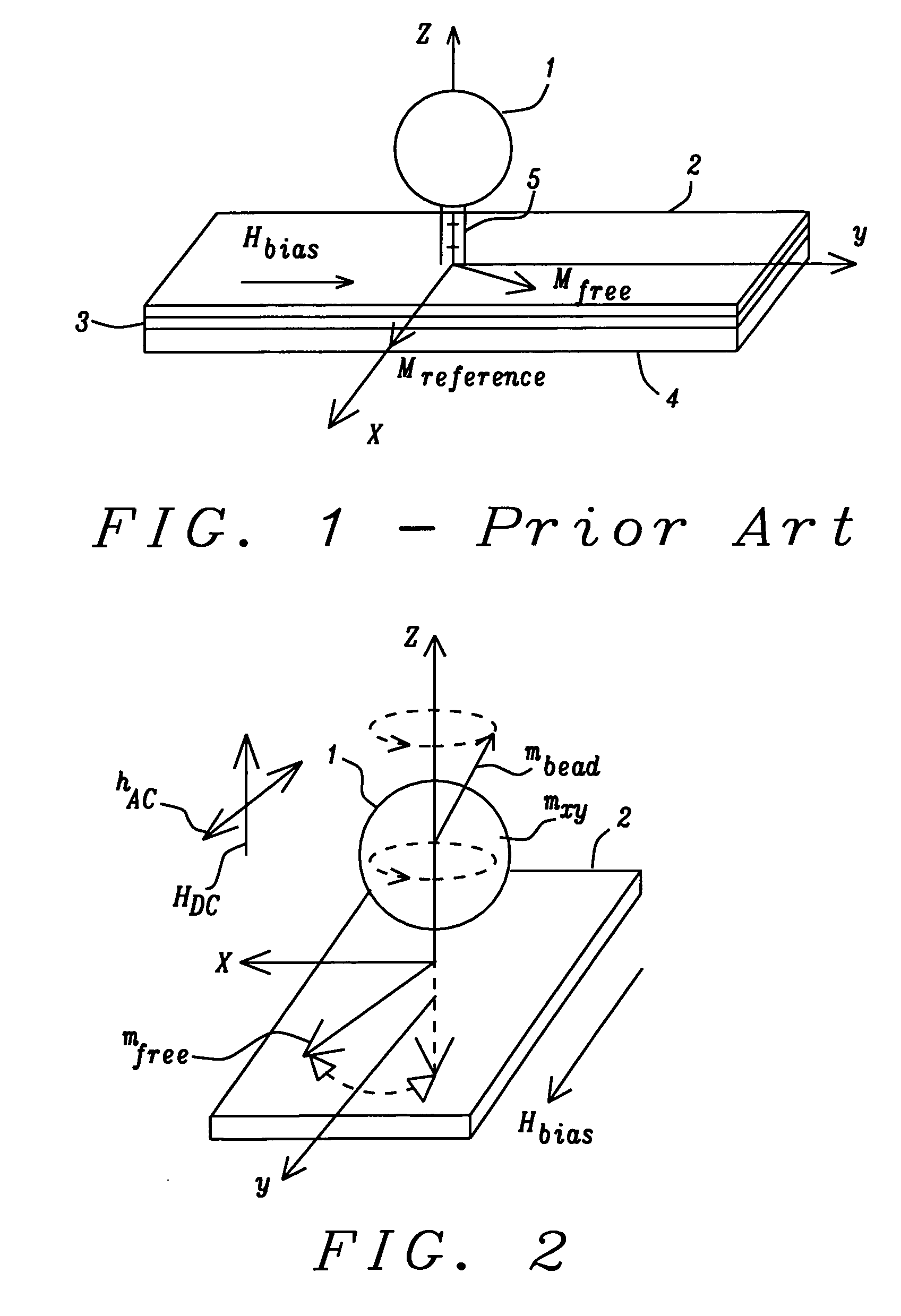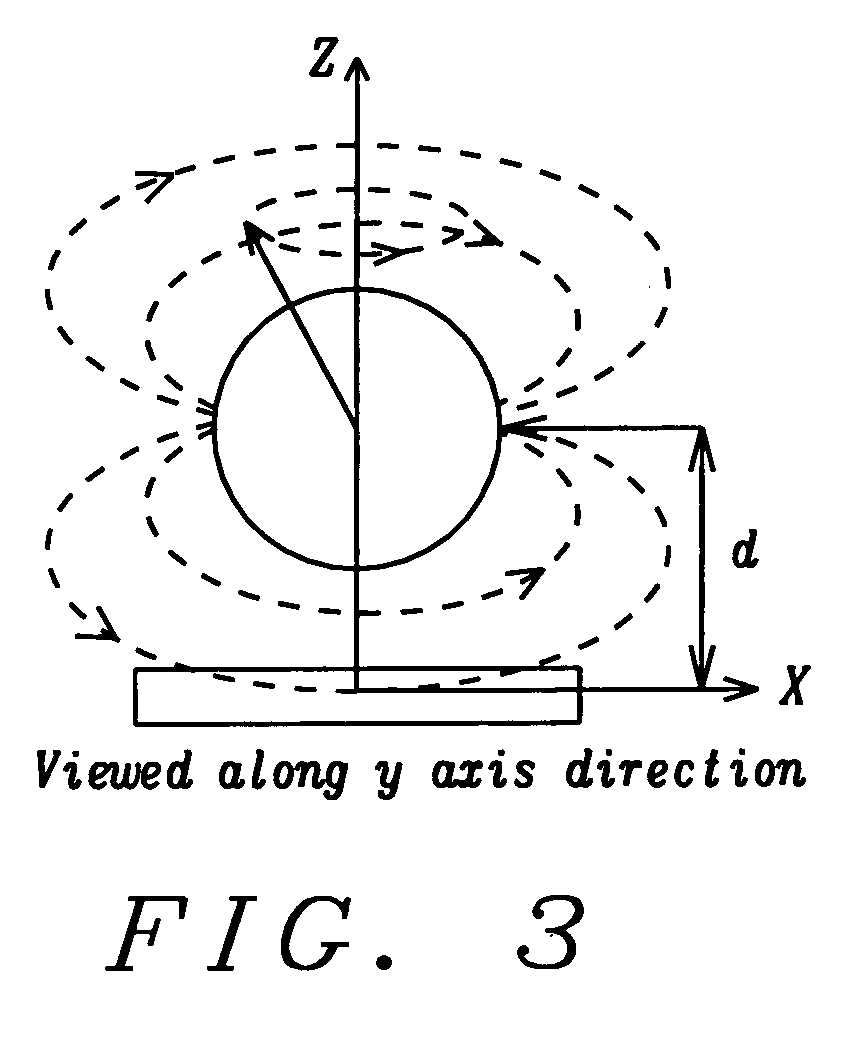Detection of magnetic beads using a magnetoresistive device together with ferromagnetic resonance
a magnetoresistive device and magnetic beads technology, applied in the field of magnetic field measurement, can solve the problems of affecting the locked-in signal, 1/f noise is very significant, and the detection sensitivity can be usually improved, and the signal band width is narrow.
- Summary
- Abstract
- Description
- Claims
- Application Information
AI Technical Summary
Benefits of technology
Problems solved by technology
Method used
Image
Examples
embodiment 1a
1. Embodiment 1A
[0074]Referring to FIG. 5A, the magnetic bead 1 is attached to the MR sensor 2 through biological or chemical binding pair 5 following a recognition process. Two permanent magnets 6 on the sides of the sensor provide a biasing field in the MR sensor to orient the sensing layer magnetization in the Y axis direction. A static field HDC is applied perpendicular to the sensor plane in the Z axis direction. This static field determines the FMR frequency of the bead magnetic moment. It also magnetizes the bead when the bead is super-paramagnetic. A stripe line (or lines) 7 exists underneath the sensor or between the sensor and the bead, where an AC current IAC is used to produce an AC magnetic field hAC in the Y axis direction to excite the FMR of the bead magnetic moment. The bead FMR then produces a rotating component in the XY plane. The MR sensor 2 detects the oscillating magnetic field
embodiment 1b
2. Embodiment 1B
[0075]Referring to FIG. 5B, every other aspect is the same as embodiment 1A except that the AC magnetic field hAC in the Y axis direction is generated not by stripe line (or lines), but externally by other means. For example, RF coils or electromagnetic waves in a microwave cavity.
embodiment 1c
3. Embodiment 1C
[0076]Referring to FIG. 5C, every other aspect is the same as embodiment 1A except that biasing DC field Hbias is applied externally or generated by the anisotropy field of the sensor. HDC (and Hbias as well if applied externally) determines the FMR frequency of the bead magnetic moment.
PUM
 Login to View More
Login to View More Abstract
Description
Claims
Application Information
 Login to View More
Login to View More - R&D
- Intellectual Property
- Life Sciences
- Materials
- Tech Scout
- Unparalleled Data Quality
- Higher Quality Content
- 60% Fewer Hallucinations
Browse by: Latest US Patents, China's latest patents, Technical Efficacy Thesaurus, Application Domain, Technology Topic, Popular Technical Reports.
© 2025 PatSnap. All rights reserved.Legal|Privacy policy|Modern Slavery Act Transparency Statement|Sitemap|About US| Contact US: help@patsnap.com



